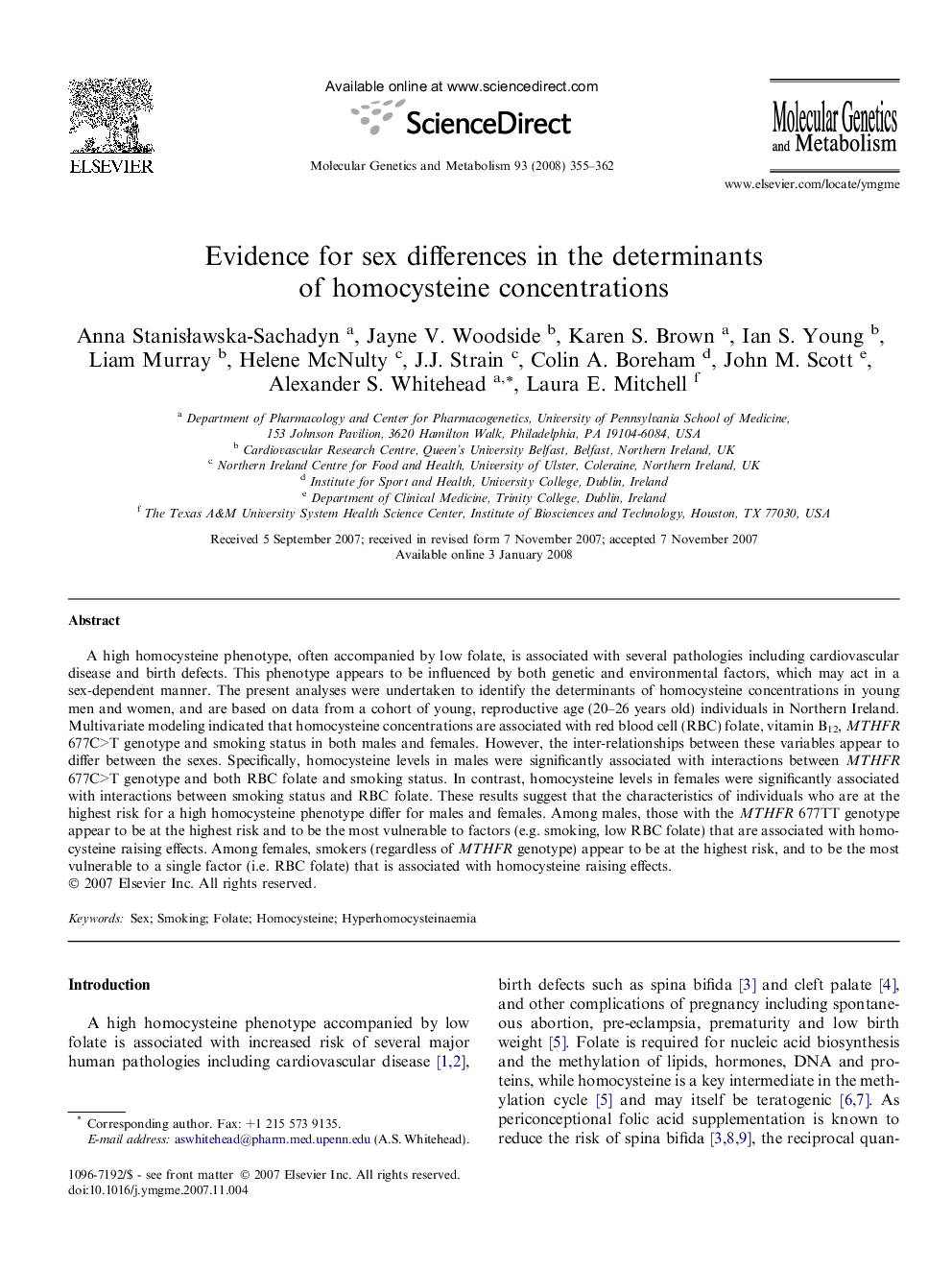| Article ID | Journal | Published Year | Pages | File Type |
|---|---|---|---|---|
| 1999441 | Molecular Genetics and Metabolism | 2008 | 8 Pages |
Abstract
A high homocysteine phenotype, often accompanied by low folate, is associated with several pathologies including cardiovascular disease and birth defects. This phenotype appears to be influenced by both genetic and environmental factors, which may act in a sex-dependent manner. The present analyses were undertaken to identify the determinants of homocysteine concentrations in young men and women, and are based on data from a cohort of young, reproductive age (20-26 years old) individuals in Northern Ireland. Multivariate modeling indicated that homocysteine concentrations are associated with red blood cell (RBC) folate, vitamin B12, MTHFR 677C>T genotype and smoking status in both males and females. However, the inter-relationships between these variables appear to differ between the sexes. Specifically, homocysteine levels in males were significantly associated with interactions between MTHFR 677C>T genotype and both RBC folate and smoking status. In contrast, homocysteine levels in females were significantly associated with interactions between smoking status and RBC folate. These results suggest that the characteristics of individuals who are at the highest risk for a high homocysteine phenotype differ for males and females. Among males, those with the MTHFR 677TT genotype appear to be at the highest risk and to be the most vulnerable to factors (e.g. smoking, low RBC folate) that are associated with homocysteine raising effects. Among females, smokers (regardless of MTHFR genotype) appear to be at the highest risk, and to be the most vulnerable to a single factor (i.e. RBC folate) that is associated with homocysteine raising effects.
Related Topics
Life Sciences
Biochemistry, Genetics and Molecular Biology
Biochemistry
Authors
Anna StanisÅawska-Sachadyn, Jayne V. Woodside, Karen S. Brown, Ian S. Young, Liam Murray, Helene McNulty, J.J. Strain, Colin A. Boreham, John M. Scott, Alexander S. Whitehead, Laura E. Mitchell,
